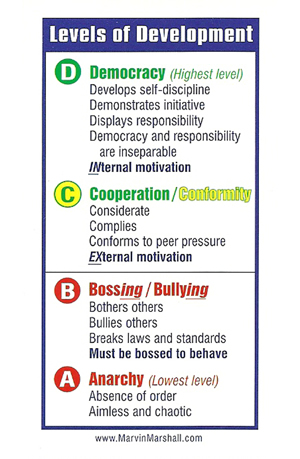Here are a few of the most common questions I receive from teachers regarding rewards. Some of them may resonate with you.
Question 1: “I am aware of your stance on giving students rewards. However, when students do their work and get good grades, isn’t the grade a reward?”
My reply:
Yes, the good grade is a reward, and there is nothing wrong with this reward. Neither is anything wrong with rewards as acknowledgments.
What I object to is giving rewards for expected, appropriate behavior. Grades are an incentive and they work to motivate only if the person is interested in a good grade. Many students are. But some could care less about the grade given them by a teacher.… >>>
READ MORE >>> →





